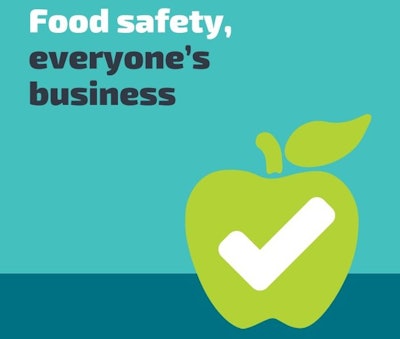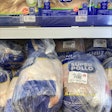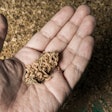
Reports of millions falling ill, high numbers of deaths and damage to economies are all too familiar at the moment, but I want to take a break from reporting on COVID-19.
Ahead of World Food Safety Day, organized by the World Health Organization (WHO) and the Food and Agriculture Organization (FAO), which takes place on June 7 this year, I thought it might be interesting to look at what food poisoning means for the global population and economy.
An estimated 600 million people fall ill each year after eating contaminated food. To put that into perspective, that’s 10% of the global population, or more than the combined populations of the world’s third and fourth most populous countries -- the United States and Indonesia.
420,000 people die each year from foodborne illnesses. While the novel coronavirus might still be relatively new, it has yet to claim that many lives.
Economic, development costs
We are all now too familiar with the various costs that can be associated with disease. Foodborne illnesses are no exception, putting strains on healthcare systems, harming national economies and trade, and, ultimately, impeding socioeconomic development.
A couple of years ago, the World Bank estimated that the total productivity loss associated with foodborne diseases in low and middle income countries was in the region of US$9.2 billion annually, and that the cost of treating illnesses had reached US$15 billion annually.
And while much is known about these illnesses, incidence is probably under-reported -- as we are so used to hearing with the novel coronavirus -- so infection and death rates are probably much higher than reported.
Can we expect improvements?
A number of lessons will be learned from the current pandemic and we can hope that that they will be applied to create a safer and more stable world, both from a health perspective and economically. Many of these lessons will applicable to food production and the need for them is probably increasing.
As the world population grows, the intensification and industrialization of agriculture and animal production to meet demand creates opportunities but also challenges.
We know all too well that local incidents can quickly evolve into international emergencies. Serious foodborne disease outbreaks have occurred on every continent in the past decade, often amplified by globalized trade.
With reference specifically to ensuring food safety, the WHO recommends setting up and maintaining both systems and infrastructure to manage food safety risks along the whole food chain, arguing that a multi-sectorial approach, with improved communication and joint action are the best ways forward.
It continues that food safety programs need to be integrated into broader food policies and programs, while producers, it says, need to think globally but act locally, ensuring that domestically produced food remains safe when traded internationally.
However, it is not simply in food production where care needs to be taken. Just as we are all being asked to play are parts in halting the spread of COVID-19. About one third of foodborne illness outbreaks in Europe are acquired in the home, and eating undercooked poultry is among consumption practices associated with illness.
A recent study across five European countries has found that consumer practices for monitoring whether chicken is sufficiently cooked are not always safe, while advice from authorities or organization working with food safety is, perhaps more worryingly, not always safe.














